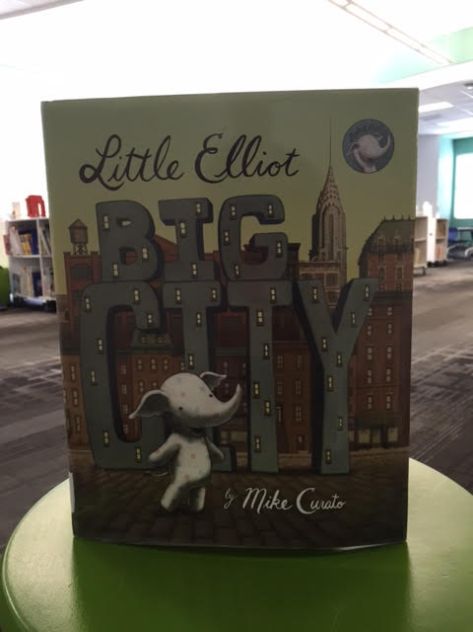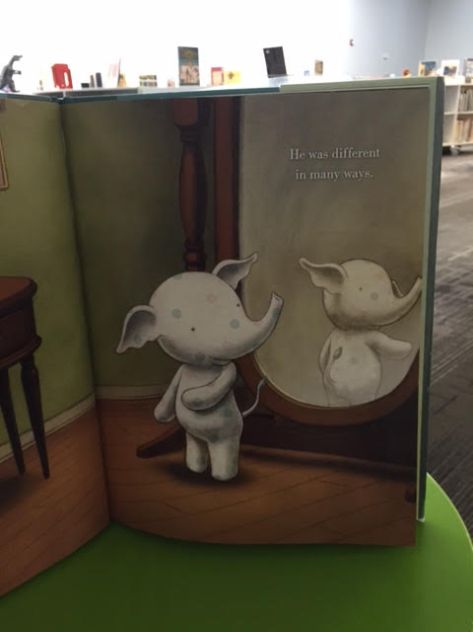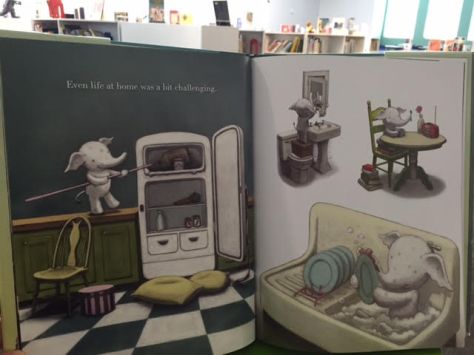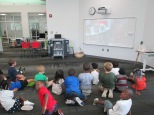
We are almost one week into our newly organized library. Each class has been coming for a library orientation. In the past, I’ve done a high-tech orientation with QR codes and videos, but this year, we went low-tech with a picture scavenger hunt of the library signs and sections in order to give students a chance to explore their new library and its organization by genre.
Our new genres are still sorted out into a picture book area, a chapter book area, and a nonfiction area, so I made 3 separate scavenger hunts and slid them into clear protectors so that students could us a Vis-a-vis pen to mark sections as they found them. The trickiest part was trying to keep students focused on one section at a time because they wanted to explore it all.
What I have noticed:
- Students were buzzing with excitement as I talked about the new genre sections and as they wandered around searching for them
- I spent much less time walking students around to search for all the princess, scary, football, etc. The conversations about books that I got to have with students were more about recommendations within sections or learning where favorite series of books had been moved to.
- Since I don’t have a full-time assistant in the library, check out time can be a bit frantic with kids asking about books, asking for help on the computer, and asking for help checking out or in. With every class regardless of grade level, I didn’t feel the frantic feelings of the past. Students were very independent within the sections they were excited about, which allowed me to focus on students who really needed to have conversation.
- Almost no students went to the computer to look up books. In the past, many students would sit at the computer during the entire library time and then have no time to actually select a book. They would just grab something on the way out. I talked with the few students who did go to the computer to ask what they were searching for. In many cases, I directed them to one of the genre sections because they were looking up football or ghosts or something like that. For students that truly needed to look up a title, I showed them how they could see which genre section it was located in.
- Students who discovered that their favorite book was already checked out tended to choose something else from that genre section. For example, a student was so excited to learn we had Isle of the Lost: A Descendants Novel. It was checked out, but I told her it was in the fantasy section. She went to fantasy and found 2 series that she had never explored before and was genuinely excited about her find. This is what I hope to see more and more, especially from students who have their one or two comfort books in the library. I hope the genre sections continue to support their comforts but also nudge them to try new things.
Reactions
Students, teachers, and families have been extremely positive with the new organization of the library.
I encouraged people to record their thoughts on the new organization using Flipgrid. Here are a few of the reactions.
Frequently Asked Questions:

- Did you put all books into genres or just the fiction section? Every book is in a new section. I started with fiction and then moved to picture books followed by nonfiction. Picture books was the hardest section for me to sort, but so far the categories are supporting our readers.
- What are your categories? Here’s a link to my Google doc of categories. This doc will change if I decide to modify any sections.
- How did you decide which section to put books in? I read the summaries, used my own knowledge, looked at the Library of Congress subjects on the copyright page, and used Novelist K-8. I used the great advice of Tiffany Whitehead to really think about the reader during the process and consider what kind of reader would most enjoy each book. I tried not to get stuck on a book for too long, but I did make a pile of books I was unsure of and came back to them later.
- What did you do in your catalog to indicate genres? I created subcategories in Destiny. Once I sorted books into genre sections, I updated each copy by scanning it into its new subcategory. Now, if someone searches for a book, the call number of the book remains unchanged, but the location indicates which genre section the book is located in. The library can always be put back into Dewey order if needed.
- How are books arranged on the shelf? For now, the books are still arranged in order by call number on the shelf within each genre section. In fiction and everybody, that means that books are sorted by author’s last name within each genre. In nonfiction, that means that the Dewey call number is still used to put books within order in the section. This may change as we go because the sections are being heavily browsed. It makes it hard to keep things in perfect order. The graphic novels and sports are already not in any kind of order because of the heavy use of those sections.
- What labels did you add to each book? Every book still has its same call number and barcode. My wife designed genre labels using Publisher and these were printed on spine label sheets from Demco. We added the genre label either above or below the call number on the spine in an attempt to not cover up the title. I also plan to add numbers to the series so that students know which books is 1st, 2nd, 3rd, but we haven’t done that yet. Fiction Labels Picture Book Labels Nonfiction labels
- How long did it take? It’s really hard to add up the time. I can say that I’ve thought about it for a long time. This summer I spent some time reading about other libraries and also listening to webinars. I wanted to hit the ground running at the beginning of this year, so many volunteers helped out with the project. The actual work of sorting, labeling, and shelving was done in about 15 days working from 8:00-3:00.

If you have additional questions, add them in the comment section and I’ll try to update the post with new answers. I’m very happy with the impact of this project so far, and I know that I will continue to see things that I love as well as things that need to be adjusted. It’s all about the readers.








































